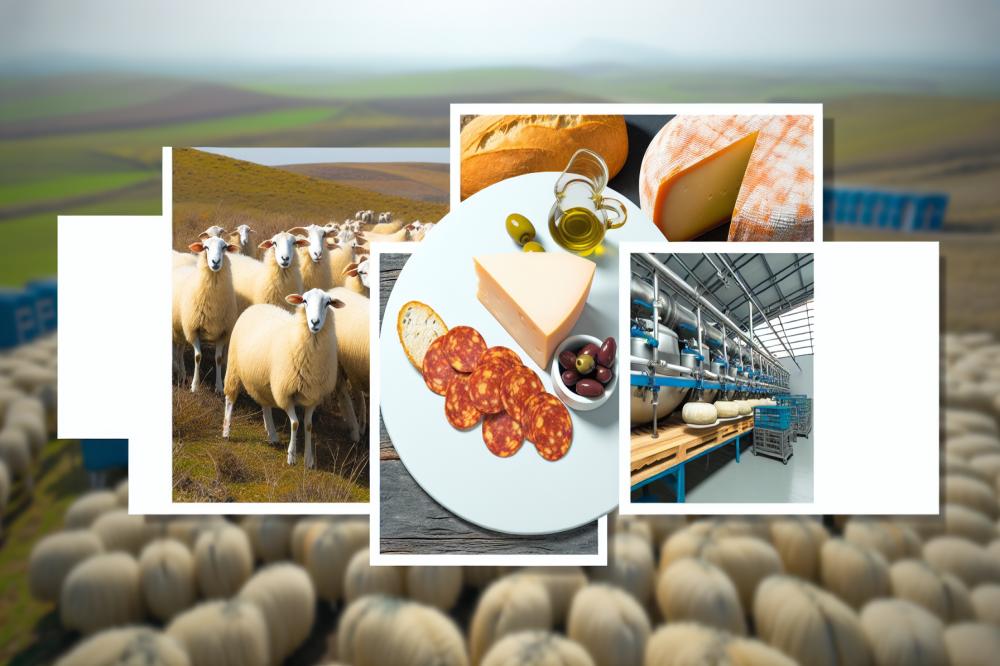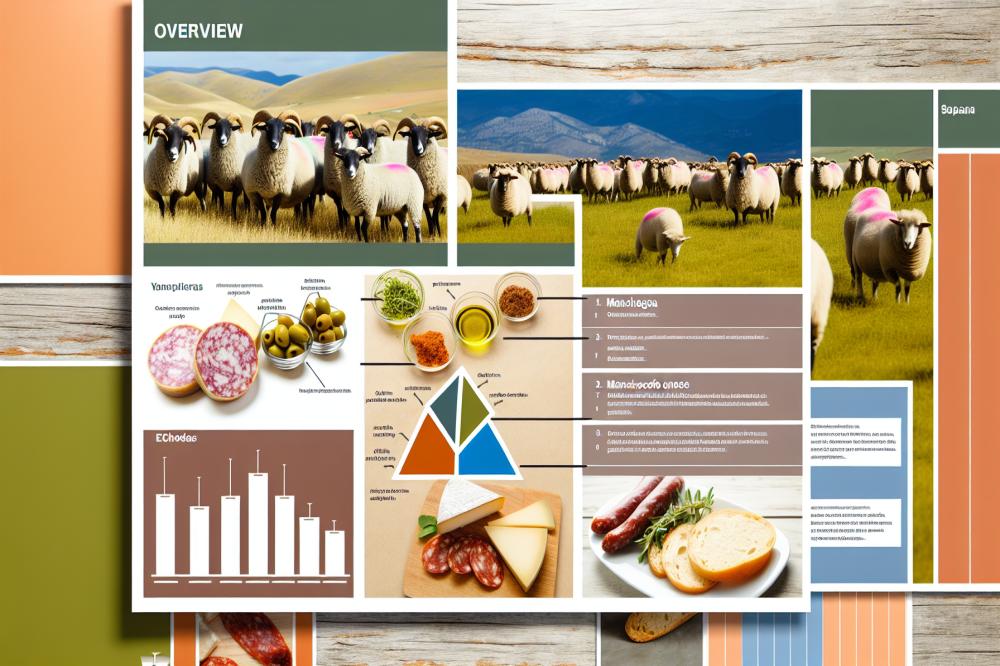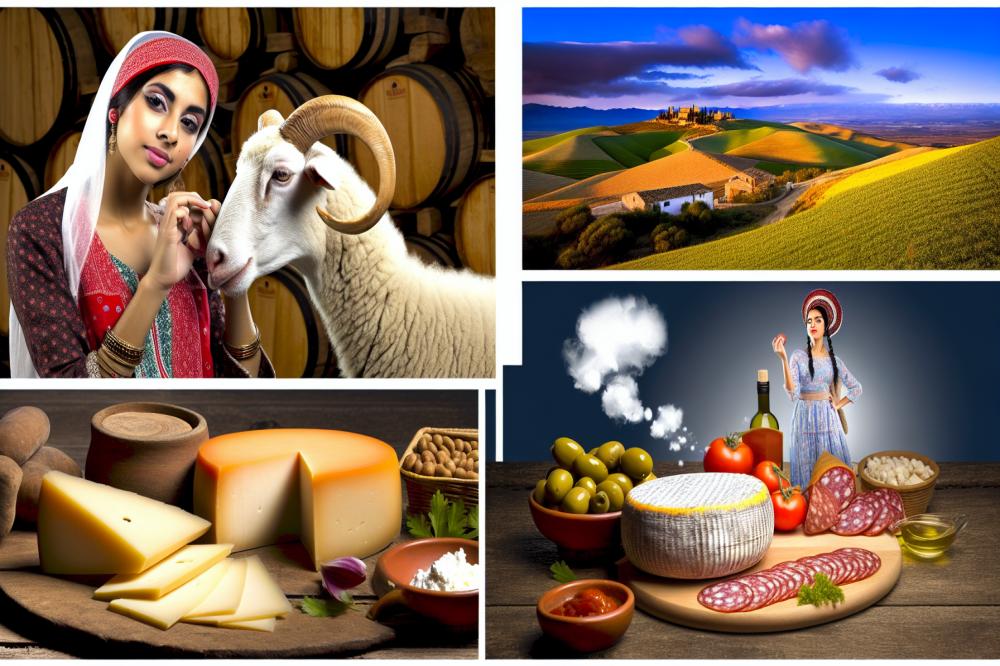The Role of Manchega sheep in Spain’s cheese production
Manchega sheep, a breed native to the heart of Spain, play an essential role in the country’s rich culinary heritage. These animals are primarily found in the La Mancha region, which is famous for its vast plains and rolling hills. Their milk is prized for its high quality, making it a cornerstone of traditional cheese production in the area.
Spanish cheese is not merely a food item; it is a cultural symbol. Generations have passed down cheese-making techniques that celebrate local flavors and agricultural practices. The connection between the land and its people is evident in each delicious bite. In addition to its delicious varieties, cheese serves as an integral part of Spanish gastronomy, often paired with wine and other staple dishes.
Cheese produced from the milk of Manchega sheep tends to have a distinctive taste and texture. Many local farms follow age-old practices to craft cheese that reflects the character of the region. This not only enhances the flavor but also maintains the traditions that define Spanish cuisine. The importance of these sheep extends beyond just the dairy; they are part of a way of life that connects communities and preserves their identity.
The Importance of Manchega Sheep in Dairy Farming

The Manchega breed plays a crucial role in Spain’s cheese production. This breed has distinct characteristics that set it apart from others. A strong, resilient animal, the Manchega thrives in the arid landscapes of Spain’s interior. Their adaptability to the environment makes them an essential part of rural life in various regions.
Milk yield is a key factor in evaluating sheep for dairy farming. Typically, these sheep produce a significant amount of milk each year. In addition to good volume, the quality of the milk is noteworthy. This breed’s milk is rich in fat content, often ranging from 6% to 8%. Such fat levels contribute to the creamy texture and richness expected in artisan cheeses.
Beyond fat content, the flavor profile of this milk is impressive. The taste combines grassy notes with a slight nuttiness, giving cheese made from it a distinctive character. Cheeses like Manchego showcase these flavors beautifully, making them popular choices among consumers and chefs alike.
Manchega sheep primarily inhabit the region of Castilla-La Mancha. This area, known for its vast pastures and sunny climate, provides an ideal environment for raising these sheep. Farmers here often take pride in their herds, contributing to the ongoing tradition of fine cheese-making in the region.
In Spain, the connection between sheep breeds and cheese quality is clear. Different breeds impart various flavors and textures to cheeses. The Manchega’s unique milk contributes to a rich heritage of artisanal cheese that is recognized worldwide. Producing high-quality cheeses relies heavily on the attributes of the sheep providing the milk.
The importance of these animals extends beyond just milk production. They symbolize a way of life that values sustainability and tradition. As local farmers continue to care for their flocks, they help preserve culinary practices that have been passed down for generations. Understanding the role of these sheep emphasizes the intricate relationship between livestock and the cheeses that define Spanish gastronomy.
Spanish cheese

Spain is known for its rich and diverse cheese culture. One of the most famous cheeses is Manchego, made from milk of the Manchega breed. This cheese hails from the La Mancha region, located in central Spain. It has a distinct flavor, ranging from nutty to buttery, depending on its aging. The texture varies, too; Manchego can be firm or semi-firm. Its popularity stretches far beyond Spain’s borders, delighting cheese lovers worldwide.
Another notable cheese is Idiazábal. Originating from the Basque Country, this cheese has a smoky quality and is made from sheep’s milk. The area’s unique pastures contribute to its robust flavor. Aged for several months, Idiazábal provides a firm, slightly oily texture that pairs well with both red wine and crusty bread.
Extending beyond these, the region of Extremadura produces Torta del Casar. This cheese is creamy and spreadable, perfect for those who enjoy a rich, indulgent taste. Made from raw milk, Torta del Casar offers earthy and herbal notes that make it distinct. It’s often enjoyed with crusty bread or drizzled with olive oil.
In Catalonia, the cheese known as Garrotxa combines traditional techniques with regional flavor. This goat’s milk cheese has a firm texture and a slightly tangy, herbal taste. The unique climate and rich pastures of the region influence its character. Garrotxa is covered in a dark rind, which adds to its visual appeal.
Exploring further, we find Queso de Murcia al Vino. This cheese gets its distinctive hue from being soaked in red wine. It has a semi-soft texture and offers a mildly tangy flavor, enhanced by the wine. The combination appeals to those who love a bit of creativity in their cheese.
A variety of other cheeses flourish throughout Spain. A soft cheese from León, known as Queso de León, often stands out for its creamy richness and local herbs. Each region’s cheese often tells a story of its surrounding environment and traditions. This deep connection to the land fosters not only unique flavors but also a sense of pride among local cheesemakers.
Spanish cheese brings together local ingredients, history, and craftsmanship. Every bite celebrates the country’s agricultural diversity and rich cultural heritage. Cheese lovers may find exploring each region’s varieties a true adventure. From the savory notes of Manchego to the bold and smoky Idiazábal, the flavors of Spain offer something for everyone.
Recipe: Traditional Manchego cheese Tapas

When it comes to showcasing the rich flavor of Manchego cheese, few dishes do it better than traditional tapas. This recipe combines Manchego with other Spanish delicacies for a delightful experience. It is simple yet delicious. Gather your ingredients and prepare to savor a slice of Spain.
Ingredients
- 200g Manchego cheese
- 100g cured Spanish chorizo
- 1 cup marinated olives
- Fresh bread or crackers
- Olive oil for drizzling
- Fresh herbs (optional)
Instructions
- Start by slicing the Manchego cheese into thin wedges.
- Next, cut the chorizo into small rounds.
- Now, arrange the cheese, chorizo, and olives beautifully on a serving platter.
- Drizzle olive oil generously over the ingredients. Sprinkle fresh herbs if you wish to add a burst of color and flavor.
- Finally, serve your tapas alongside fresh bread or crackers for a delightful crunch.
Nutritional Information
- Calories: 350 per serving
- Protein: 20g
- Fat: 25g
- Carbohydrates: 10g
Health Benefits
Manchego cheese offers a variety of health benefits. It serves as a great source of protein, which is essential for muscle repair and growth. Calcium found in this cheese supports strong bones and teeth. The healthy fats help maintain good heart health and provide lasting energy. Incorporating this cheese into meals contributes to a balanced diet. Enjoying these tapas can make for a nutritious snack or appetizer while allowing you to indulge in traditional Spanish cuisine.
Final Thoughts on Manchega Sheep and Spanish Cheese

The significance of Manchega sheep in Spain’s cheese production cannot be overstated. They are the backbone of many artisan cheeses, especially the famous Manchego cheese. Their milk provides the rich flavor profile that defines this iconic product. For centuries, these sheep have thrived in Spain’s diverse landscapes, lending their distinctive qualities to the regional cheese-making traditions.
Spanish cheese boasts incredible diversity thanks to the various breeds of sheep, goats, and cattle found throughout the country. Each type of cheese tells a story of its environment and the people who make it. Traditional methods of cheese-making, often passed down through generations, contribute to this rich tapestry. The flavor and texture of each cheese can vary widely based on the milk used and the production techniques employed.
Exploring different cheeses from Spain is often a delightful experience. From strong and pungent varieties to mild and creamy options, there’s something for everyone. Tasting Manchego alongside other regional cheeses can provide a unique culinary journey. Cheese lovers should take the opportunity to savor these products, perhaps even enjoying them with a glass of Spanish wine.
In summary, the role that Manchega sheep play in cheese production highlights the importance of local breeds in preserving culinary heritage. Readers are encouraged to explore and enjoy the vast array of traditional Spanish cheeses. Each bite is not only a taste of the land but also a connection to the traditions and culture of Spain.



